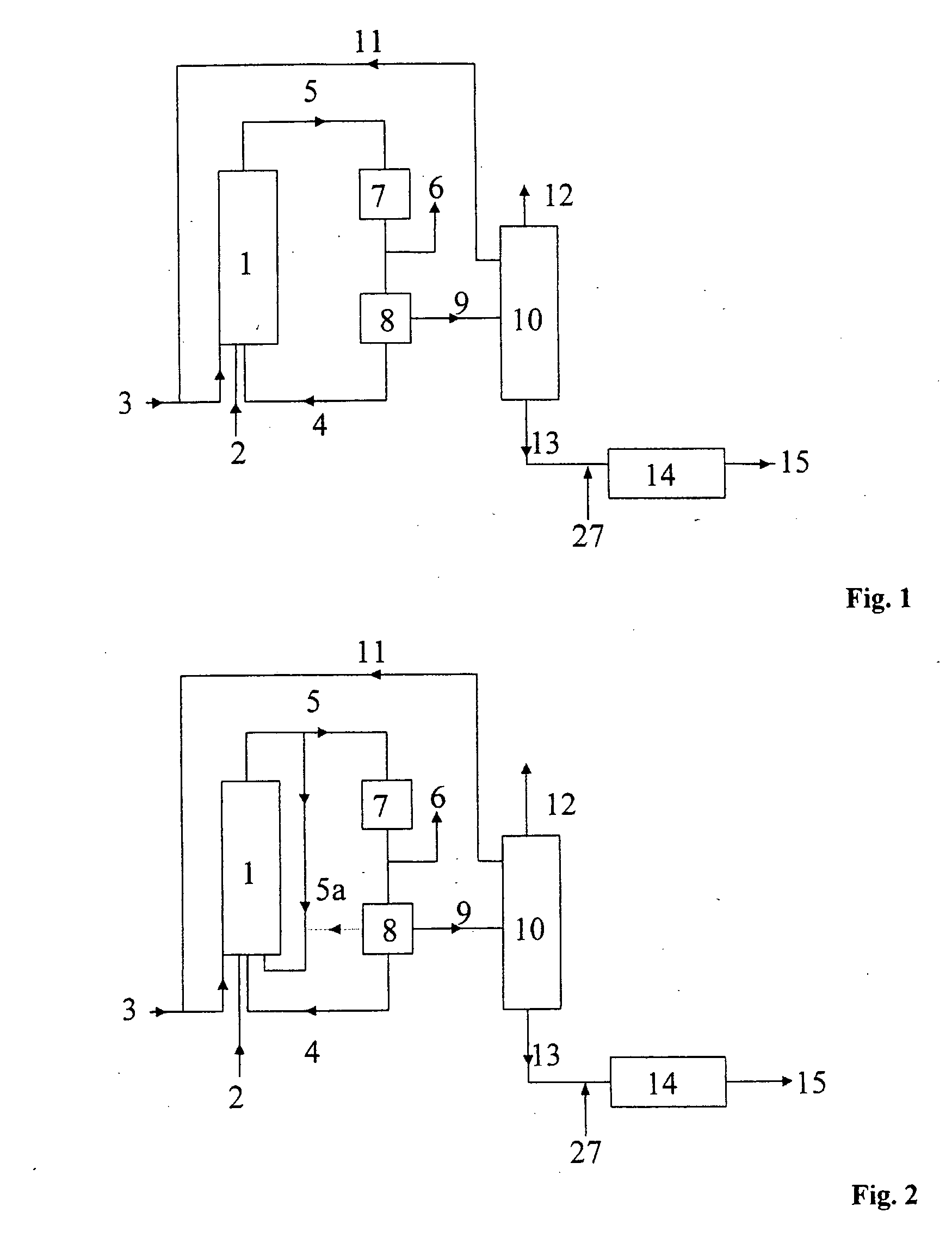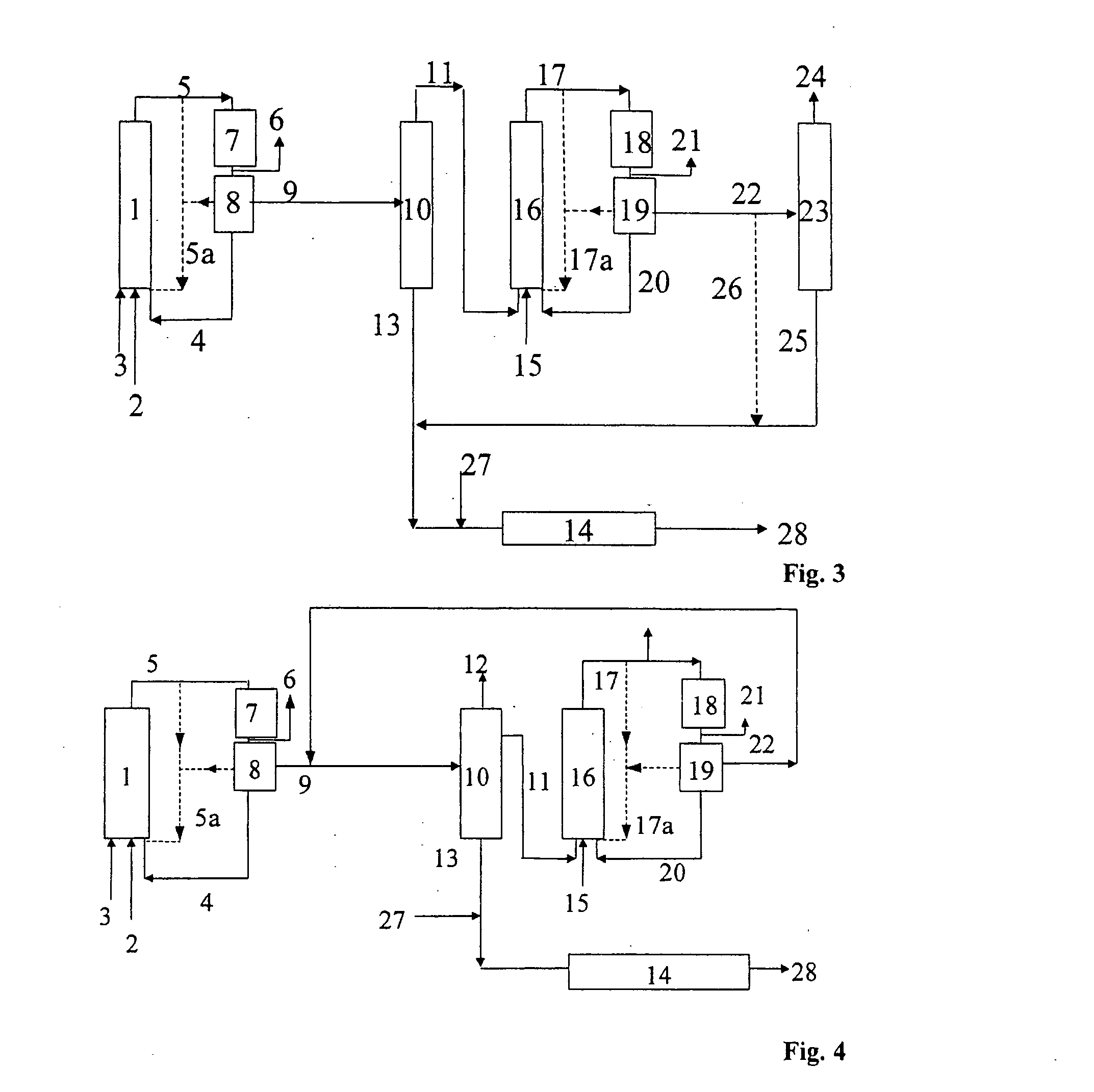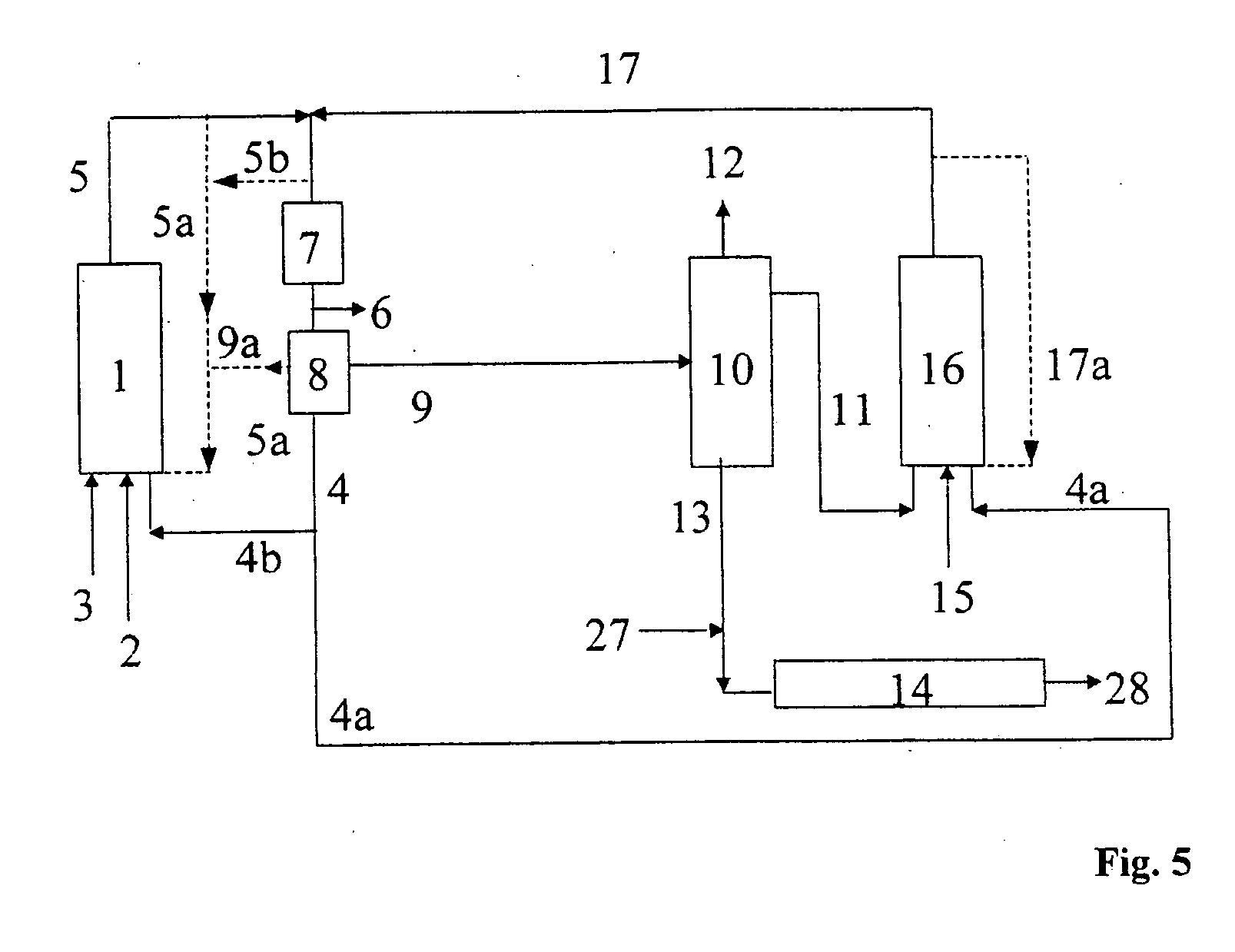Process for the hydroformylation of olefins
a technology of hydroformylation and olefins, which is applied in the preparation of carbonyl compounds, organic chemistry, chemistry apparatus and processes, etc., can solve the problems of unsatisfactory conversion of aldehydes, relatively long reaction time and/or relatively high reaction temperature, and undesirable secondary and subsequent reactions of aldehydes, etc., and achieves the effect of large yield
- Summary
- Abstract
- Description
- Claims
- Application Information
AI Technical Summary
Benefits of technology
Problems solved by technology
Method used
Image
Examples
embodiment 1
[0083] One variant of embodiment 1 of the process of the invention is shown in the form of a block diagram in FIG. 1. In this variant, the hydroformylation is carried out in one hydroformylation stage in a reactor. The catalyst is an unmodified cobalt complex which is generated simultaneously with the hydroformylation by reaction of an aqueous cobalt salt solution with synthesis gas. The feed olefin (mixture) 3, recycle olefin 11, synthesis gas (carbon monoxide and hydrogen) 2 and an aqueous solution of a cobalt compound 4 are fed into the hydroformylation reactor 1. The hydroformylation mixture 5 obtained in this way is depressurized to from 1.5 to 3.0 MPa and, after the cobalt removal 7 carried out using water and air, is freed of cobalt solution 4 in the catalyst separation 8. Prior to the catalyst separation 8, excess synthesis gas 6 is taken off. The aqueous phase 4 containing cobalt salts is recirculated to the hydroformylation reactor 1, if appropriate after discharge of a sm...
embodiment 2
[0084] In this embodiment of the process of the invention, too, the hydroformylation is carried out in only one hydroformylation stage in a reactor. The catalyst is once again generated in the hydroformylation reactor simultaneously with the hydroformylation by reaction of synthesis gas with an aqueous cobalt salt solution. Embodiment 2 differs from embodiment 1 in that the desired amount of aldehyde is introduced entirely or partly by recirculation of part of the liquid hydroformylation output.
[0085] One variant of embodiment 2 of the process of the invention is shown in the form of a block diagram in FIG. 2. The feed olefin (mixture) 3, if appropriate recycle olefin 11, synthesis gas (carbon monoxide and hydrogen) 2, an aqueous solution of a cobalt compound 4 and hydroformylation output 5a, with or without catalyst, are fed into the hydroformylation reactor 1. The hydroformylation mixture 5 obtained in this way is depressurized to from 1.5 to 3 MPa and, after the cobalt removal 7...
embodiment 3
[0086] In the illustrative embodiment 3, the process is carried out using two hydroformylation stages which each have one hydroformylation reactor, with an unmodified cobalt complex, which can be generated simultaneously with the hydroformylation by reaction of an aqueous cobalt salt solution with synthesis gas, being used as catalyst at least in the second hydroformylation reactor.
[0087] One variant of embodiment 3 of the process of the invention is shown in the form of a block diagram in FIG. 3. The olefin mixture 3, the synthesis gas 2 (carbon monoxide and hydrogen) and a catalyst solution 4 are fed into the first hydroformylation reactor 1. The hydroformylation mixture 5 obtained in this way is depressurized and, after the cobalt removal 7 carried out using water and air, is freed of cobalt compounds 4 in the first catalyst separation 8. Prior to the catalyst separation 8, excess synthesis gas 6 is taken off. The catalyst-containing phase 4 is recirculated to the first hydrofor...
PUM
| Property | Measurement | Unit |
|---|---|---|
| molar ratio | aaaaa | aaaaa |
| molar ratio | aaaaa | aaaaa |
| pressure | aaaaa | aaaaa |
Abstract
Description
Claims
Application Information
 Login to View More
Login to View More - R&D
- Intellectual Property
- Life Sciences
- Materials
- Tech Scout
- Unparalleled Data Quality
- Higher Quality Content
- 60% Fewer Hallucinations
Browse by: Latest US Patents, China's latest patents, Technical Efficacy Thesaurus, Application Domain, Technology Topic, Popular Technical Reports.
© 2025 PatSnap. All rights reserved.Legal|Privacy policy|Modern Slavery Act Transparency Statement|Sitemap|About US| Contact US: help@patsnap.com



